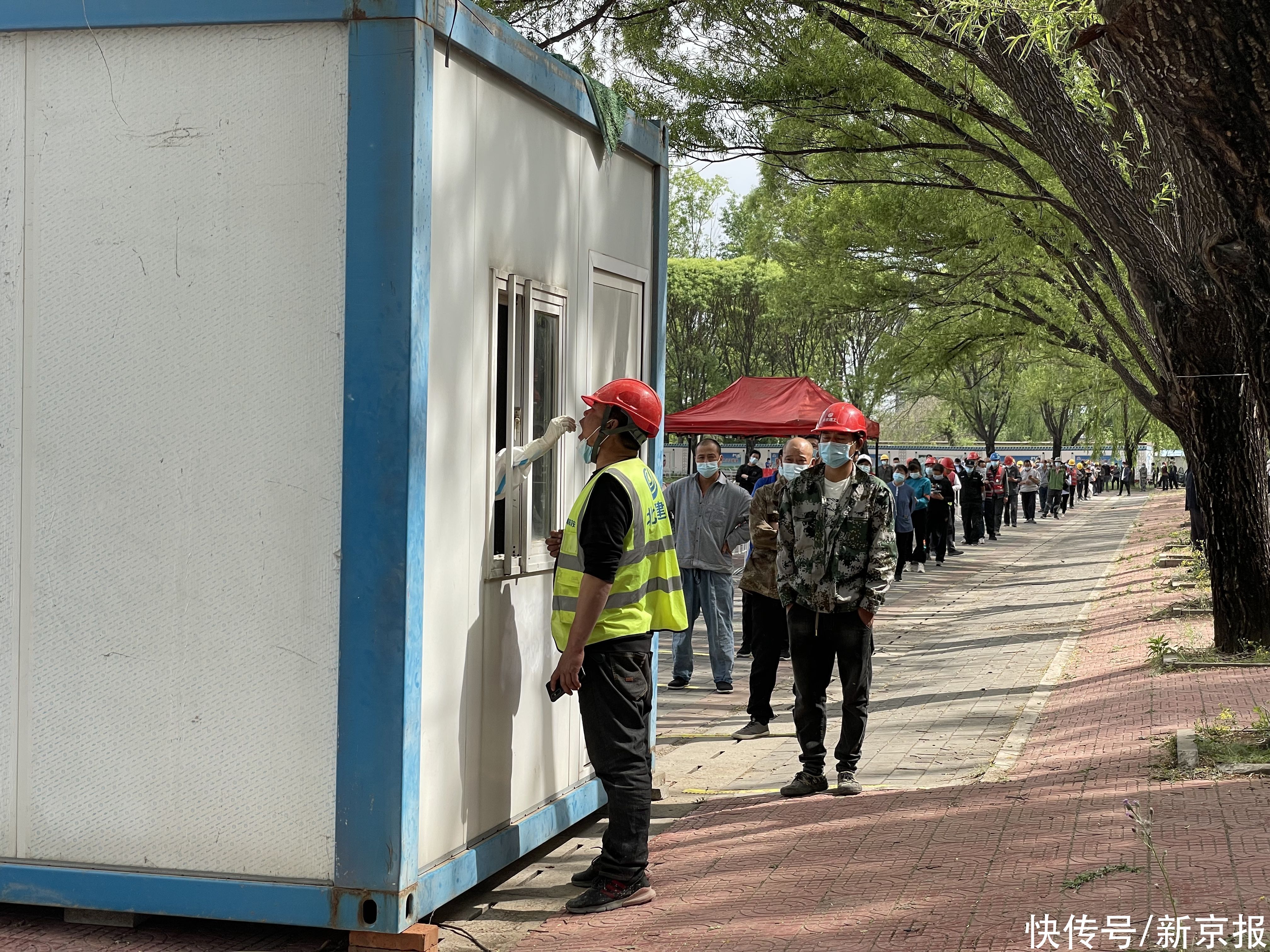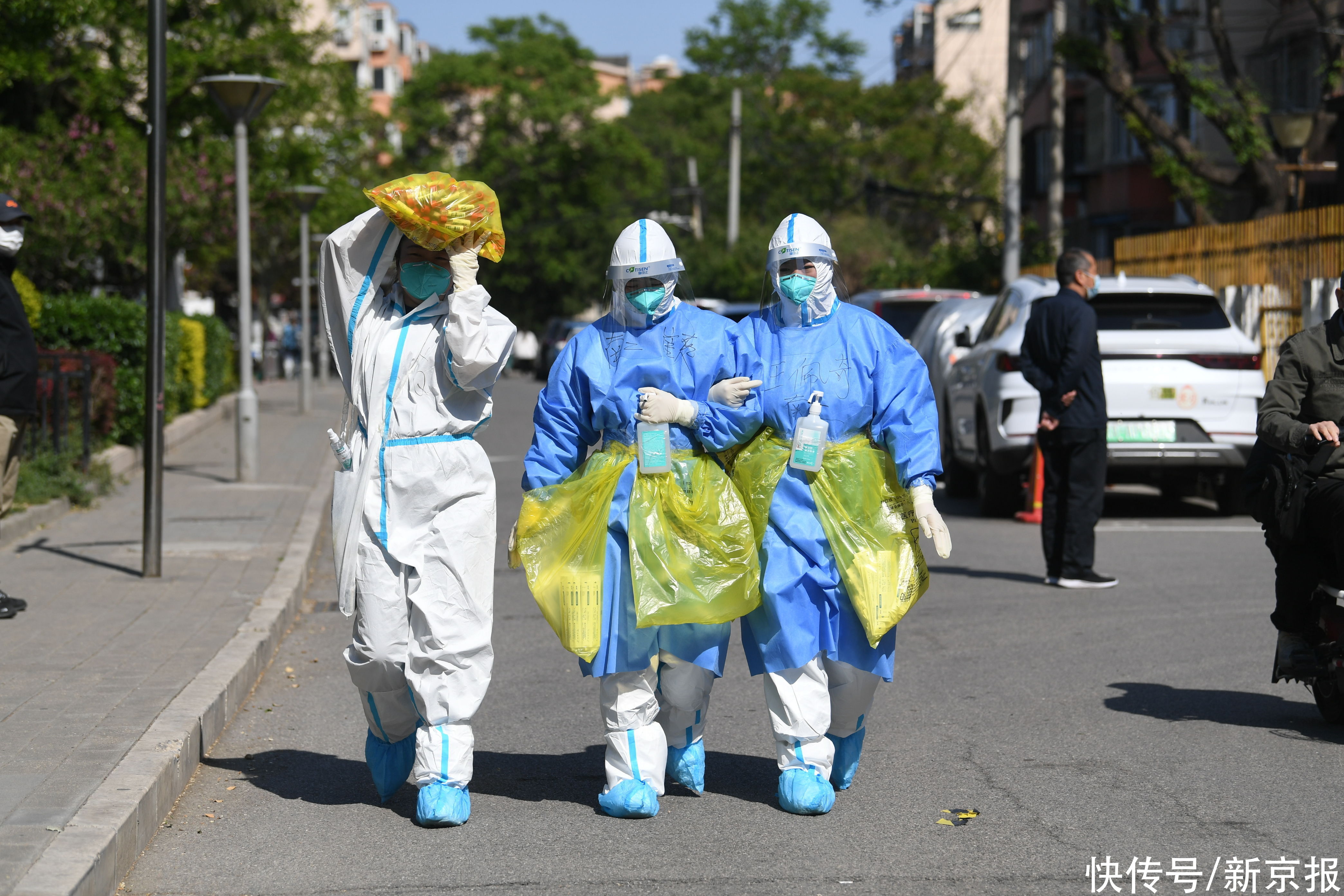
May 1st, at the west gate of Jingshan Park in Beijing, staff and volunteers check the nucleic acid test certificate of tourists. Photo by Beijing News reporter Zhang Lu
The number of new cases in Beijing’s current round of the epidemic is still at a high level for several consecutive days. The epidemic prevention and control work is in a critical period. According to the latest report, among the 45 newly infected people from 0:00 to 15:00 on May 7, 2 infected people had negative nucleic acid test results for the previous 5 times until they developed fever and cough symptoms on May 4. Participate in community nucleic acid screening to test positive.
The nucleic acid test results of the two were negative for 5 consecutive times, and they were not tested positive until clinical symptoms appeared, which also shows the strong concealment of virus transmission. Before that, there were even two positive cases in Chaoyang District that were detected for the 6th and 7th times respectively. This confirms the judgment of professionals on the transmission characteristics of the Omicron variant virus, and also responds to the question of some residents “every time the test results are negative, why continue nucleic acid testing”.
This is closely related to the characteristics of the Omicron variant. Its strong infectivity, fast transmission and strong concealment are more likely to lead to multiple or concentrated outbreaks of the epidemic. For some infected persons, due to the low viral load in the early stage of infection, they can only be detected by repeated sampling and testing. This also means that multiple rounds of nucleic acid testing are an important means to discover potentially infected individuals and block the spread of the virus.

On May 7, at the nucleic acid testing site of the No. 2 Gaoliying Primary School in Shunyi, Beijing, many migrant workers from surrounding areas were queuing for nucleic acid testing. Photo by Beijing News reporter Geng Ziye
On May 7, the latest report on the epidemic situation in Beijing showed that the transmission chain of the current round of epidemic in Beijing was basically clear, and the newly infected people whose source of infection had been identified were all the same as those previously reported. There is an epidemiological link among the infected. For example, the vast majority of cases in this round of Beijing’s epidemic were found in closed and controlled areas, control areas, centralized isolation points, and people in home isolation. Therefore, it is more necessary and urgent to carry out multiple rounds of nucleic acid testing in key areas in order to outperform the virus, not leave every potential infected person behind, and achieve “early detection, early isolation, and early treatment”.
To this end, on May 7th, 8th and 9th, Beijing Chaoyang, Fangshan, Dongcheng, Haidian, Fengtai and other districts continued to carry out three rounds of regional nucleic acid screening. People who fail to participate in the test as required will also have a pop-up prompt in Beijing Healthbao. In this regard, citizens should understand and cooperate, and actively participate in the ongoing multiple rounds of nucleic acid testing.
What needs to be seen is that since the current round of the epidemic in Beijing, relevant departments, epidemic prevention personnel, including citizens, have made great efforts to prevent and control the epidemic. For example, in order to facilitate citizens to carry out nucleic acid testing, normalized nucleic acid testing points have been established and optimized, and some testing sites also support the special service of “pop-up personnel”; Beijing Healthbao has also updated its functions to query health codes and nucleic acid negative time records and vaccination situation is more convenient; emergency convoys have been set up in key epidemic prevention and control areas, and the community will “dispatch orders” for non-critical and critically ill patients; Chaoyang District and Fangshan District, two key epidemic areas, have carried out multiple rounds of nucleic acid testing, while Some citizens have been working from home for many days…

Around 3 pm on April 30, in Songyuxili Community, Panjiayuan Street, Chaoyang District, Group 10 Doctors and volunteers conducted nucleic acid tests on five closed buildings. Photo by Beijing News reporter Wang Ying
At present, the prevention and control of the epidemic in Beijing is in a critical period of stalemate. Except for key areas, there are still hidden sources of infection in the society, and the spread of the epidemic has not been completely blocked. There are sporadic cases. During this critical period, it is still necessary to manage and control all risk points and personnel as quickly as possible, so as to achieve social zero as soon as possible. Sealing and control management, regional nucleic acid screening, vaccination, and reducing the flow of people, these prevention and control strategies that have been proven to be effective in blocking the spread of the virus should continue to be adhered to.
This round of epidemic prevention and control in Beijing is inseparable from the efforts of relevant departments, community workers and volunteers, as well as the participation, understanding, support and cooperation of every citizen. In the past ten or so days, many citizens have conducted multiple rounds of nucleic acid testing and made great efforts. In the current critical window period for epidemic prevention and control, I also hope that all citizens can persevere, continue to actively participate in nucleic acid testing, and work together to win this battle against the epidemic as soon as possible.
Writing by Yan Chuan (media person)
Editor/Ding Hui
Proofreading/Fu Chunyu